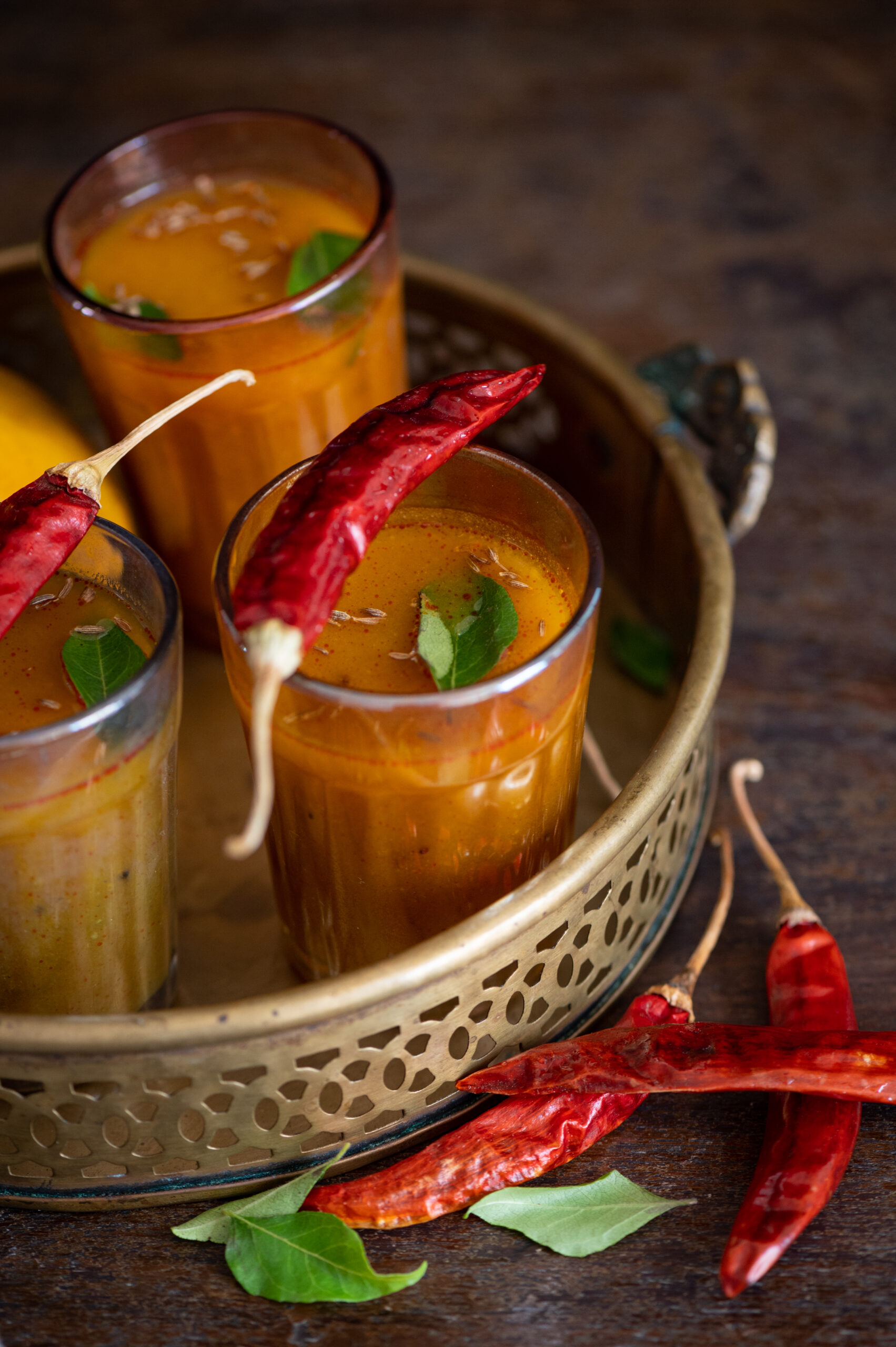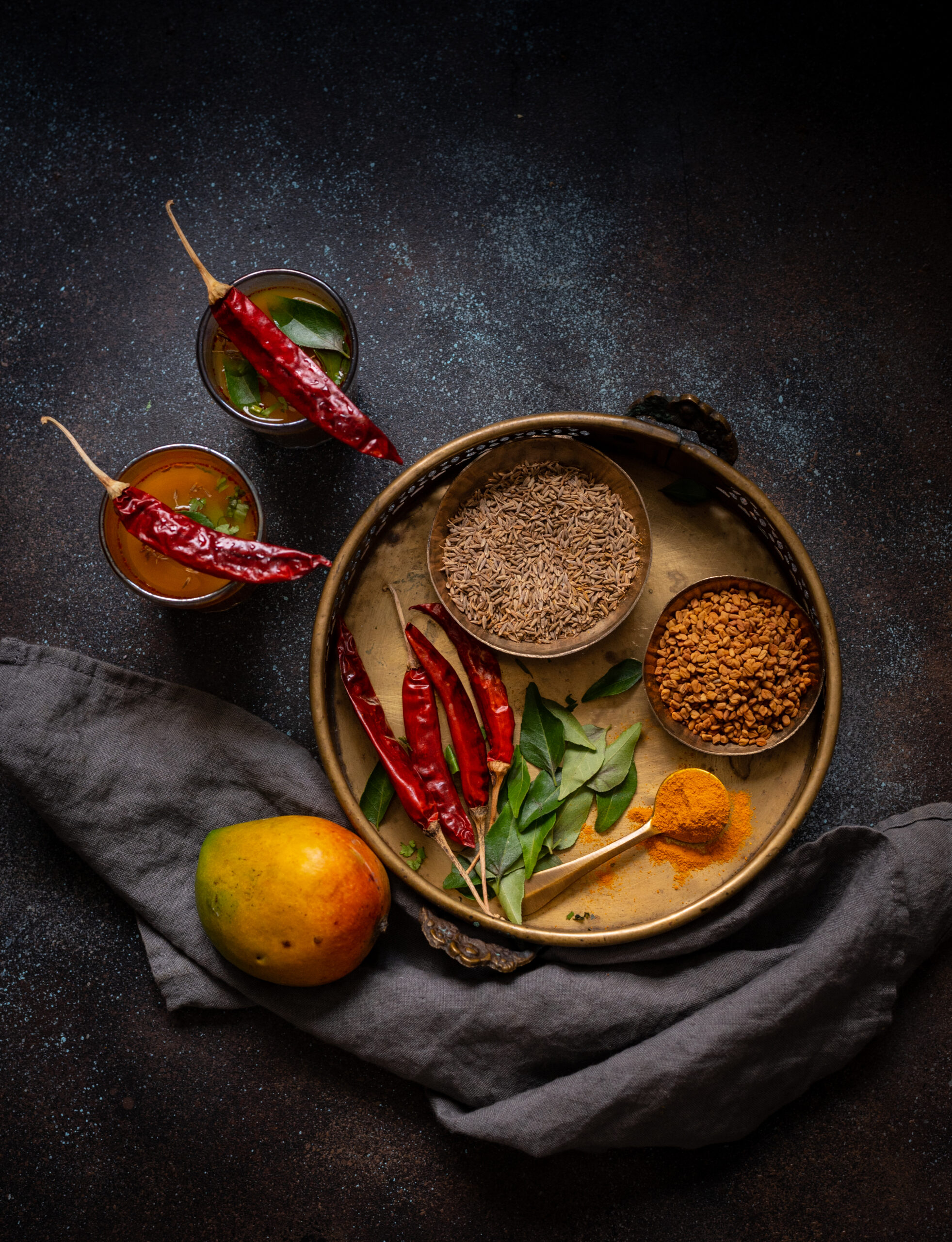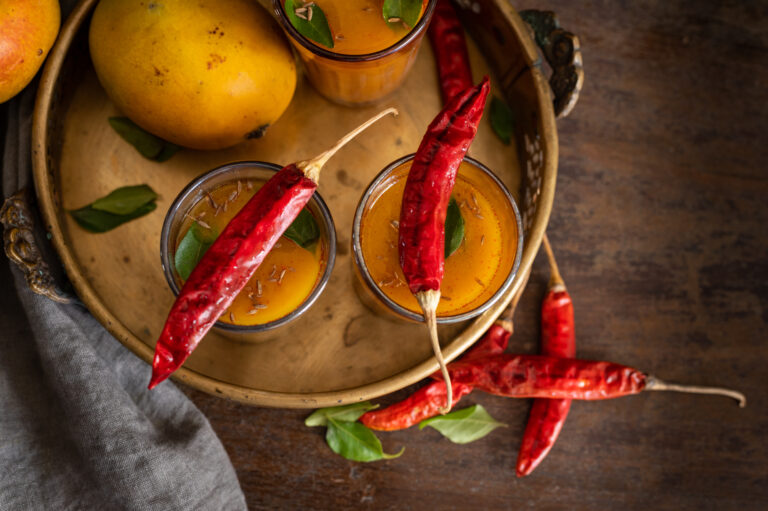Osaman is a kind of thin broth made in Gujarati kitchens. It’s rather similar to rasam, although certain ingredients like tamarind are eliminated whereas other ingredients like jaggery are used. As I’ve said numerous times in other posts, every community and region in India will have its own variations on certain staples: rices, curries, dals and so on. With it being mango season here – in the country as well as on this blog! – this ripe mango rasam I shared a couple of years back was on my mind. That was when an idea struck: why not make the traditional osaman I had grown up with, but with a luscious, fruity twist?
Osaman is essentially made using the water that dal is boiled in, and served alongside the same dal in a meal. Inspired partly by mango rasam and partly by the Gujarati curry known as fajeto (which is similar to Tamil cuisine’s morkuzhambu), I blended some ripe mango into an osaman as a culinary experiment. The result was something delightful, and I’m excited to share it with you today. This mango osaman is my own recipe, bringing together various comforting influences into a single dish.
Despite being popular in Gujarati homes in the summer, the yoghurt-based fajeto is a heavier dish, and is not among my family’s favourites. They’ve been getting their dairy intake from this lovely lassi anyway, so this osaman was the perfect substitute, allowing me to bring mangoes into our lunch preparations in a new way as well. It’s been much appreciated, and I’m sure it will become a part of our regular meals over many mango seasons to come.
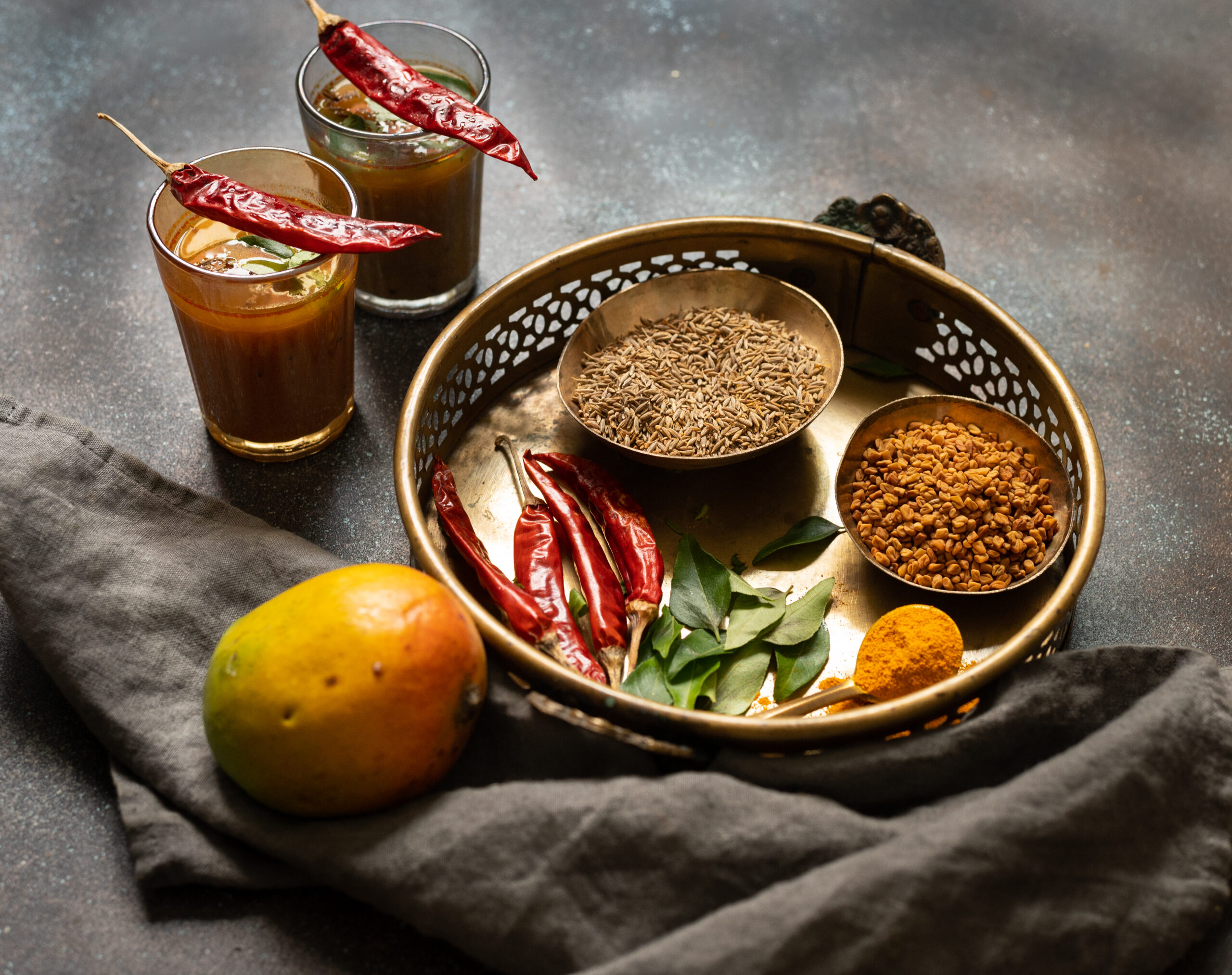
Ripe Mango Osaman
(Yield: Approximately 5 cups)
3½ cups water
1 cup ripe mango pulp
½ cup boiled toor dal
Juice of 1 lemon
Salt to taste
½ teaspoon turmeric powder
1 teaspoon cumin powder
1 teaspoon coriander powder
½ teaspoon red chilli powder
2 teaspoons jaggery
2 teaspoons ghee
½ teaspoon mustard seeds
½ teaspoon cumin seeds
1 teaspoon grated ginger
2 dry red chilies
A handful of finely cut coriander leaves
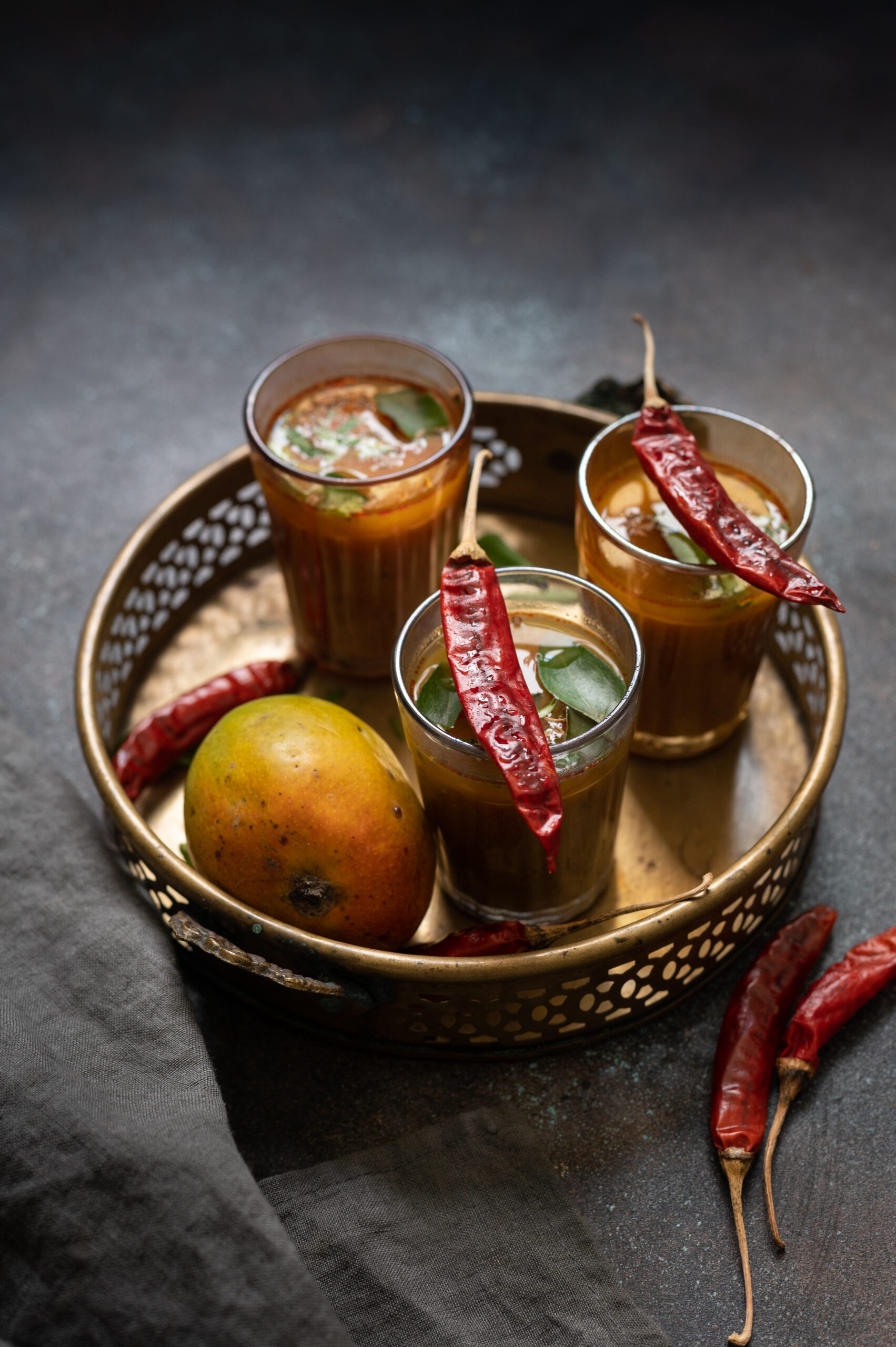
In a pot, add the dal, mango pulp and water. Mix well, using a hand blender.
Add the salt, cumin powder, coriander powder, jaggery, turmeric powder and grated ginger to the pot. Allow to boil for about five minutes so that the flavours come together nicely.
In a small pot, prepare the tadka (seasoning). Add ghee. Once it’s hot, add the mustard seeds, cumin seeds and dry red chillies. As soon as they begin spluttering, add the red chilli powder and immediately pour it over the hot osaman.
Squeeze some lemon juice over it, and garnish with coriander leaves and serve.
Just like rasam, this ripe mango osaman works beautifully both as a warm beverage and as an accompaniment to rice. I hope you’ll enjoy this Gujarati-Tamil fusion dish of mine. I’m simply thrilled to have one more recipe to make the most of my mango madness with!
